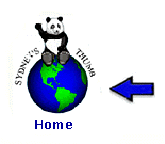Green Lodging Assessment (GLA) Version 1.0
(Advanced Assessment for Resorts, Large Lodges and Hotels in Sensitive Areas)
© 2007 Sydney's Thumb
Abstract
For large facilities in sensitive areas, Sydney's Thumb recommends a systematic approach to resort and lodge retrofitting that follows the procedures used in Watershed Analysis and Management, a risk-based land-use management method developed by The Pacific Watershed Institute and used widely throughout the United States. This method matches facilities and management to the unique sensitivities of a site. It also internalizes consideration of measures that are most cost-effective and offer the greatest benefit per dollar invested by the resort, spa or hotel. To implement such an approach, the sponsor would perform a diagnostic work-up on current "operations" as well as environmental sensitivities.
This would consist of four basic assessment modules. Each of the modules would be guided by a series of "critical questions" that relate to local habitat, water supplies, water use, climate regime, energy use, waste-loads and hazards to species. The work-up would then be passed on to a team that would select specific measures to address the defined risks and hazards.
One or two well-trained staff members would be able to perform most of the assessment in about a week. Training would include familiarity with energy auditing. It would also be beneficial to enlist the help of a local biologist and/or other professionals (e.g., hydrologist, energy auditor and toxic-materials ecologist). Quite often, voluntary pro-bono help should be available from local government or NGO's, or a public utility, especially if the sponsor makes it clear that management is willing to make a substantial investment/commitment to protect the commons.
This is a bit different than the procedure typically used when lodges are retrofitted and shift to green operations: it is both more systematic and disciplined. The benefit of such an approach is that the new investment is apt to be more cost-effective and better suited to local conditions. A common mistake in retrofitting lodges is to assume that one size (or one set of prescriptions) fits all. Conditions are too variable for that.
The effectiveness of the approach depends upon monitoring and adjustments over time. A monitoring protocol would be based upon the metrics defined during assessment. This follows the principles of Adaptive Resource Management, developed and applied in 400 varied watersheds and biomes throughout the United States. If the facility were relatively distant from streams, forests, beaches, marine waters, lake and mountain habitats, the assessment would be greatly simplified and focus mostly on C02 emissions and water-use.
Please Note: module details available upon request. © 2007 Sydney's Thumb


